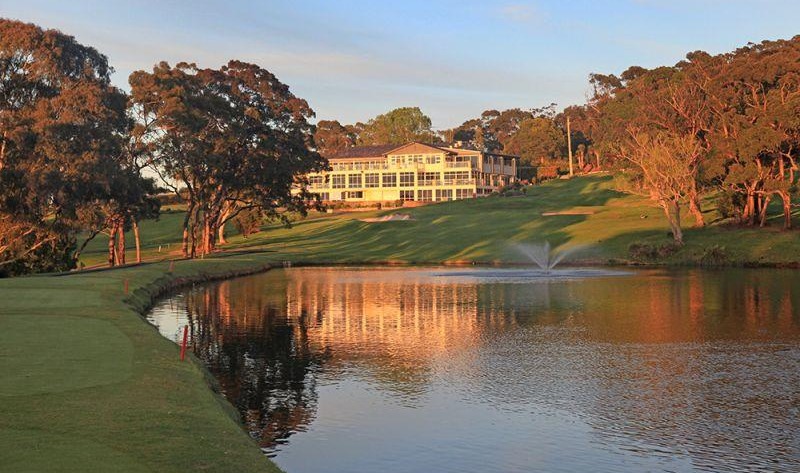18 Jun 2018 | Professional golf |
CLAYTON: Harder does not mean better
by Mike Clayton

The first time I saw Shinnecock Hills was in 2002. Wayne Grady, the 1991 USPGA champion, and I were driving back from Bethpage Park the week before the US Open when we spied the understated entrance to one of America’s great and storied clubs. Major champions can open doors closed to most and we ended up spending the evening walking the course with the superintendent. A few USGA guys had visited during the week discussing how they wanted the course to be set up for the 2004 Open. I distinctly remember saying to him, ‘They could only mess it up from here.’ Of course that final day into 2004 descended into something of a farce as early in the day players putted off super slick greens and scores were well in excess of par. Only Robert Allenby equaled it but he was far enough back not to be burdened with the expectation of winning and the consensus was it was something the USGA didn’t care to repeat. The US Open has always been about setting the most brutal test possible, one not arranged to ‘humiliate the best players but rather to identify them’ as Sandy Tatum said at the infamous 1974 Open at Winged Foot when Hale Irwin shot seven over par and won by two shots. Shinnecock Hills was clearly playable early on the morning of the third round with Daniel Berger and Tony Finau, two of the longest drivers on the tour, shooting 66s after making the cut by a single shot. By the end of the day they had unimaginably played themselves into Sunday’s final group. By the middle of Saturday afternoon the course was pushed to the very edge, and many would suggest, over the edge. Several of pin positions were difficult in the extreme and whilst the wind got up it was only to the predicted strengths. Yet, the USGA pointed to the wind being the problem. It’s hardly like they weren’t warned and they are supposed to be good at this. There are two separate but related problems here. The first is the obsession of the organisers have with par and the ‘harder is better’ mentality. They were criticised by many for last year’s championship at Erin Hills where Koepka, shot sixteen under par. Erin Hills is a big, wide course made for wind but the wind didn’t blow and left a course very vulnerable by Open standards especially in the face of one of the longest hitters ever to play the game. The harder is better crowd thought it a blot on the championship and the masochists couldn’t enjoy the one week of the year where pros are made to look less than great. Perhaps, in reaction to last year, the determination seems to have been 280 would again mean something at the Open and 290 would be good for a place inside the top 20. It was also clear the USGA would have to water the greens on Saturday night and put the pins in less than difficult places in order to restore order and to avoid more of the criticism they deservedly endured on Saturday. Tommy Fleetwood was one who suffered through a miserable Saturday, his 78 seemingly putting him far out of the picture. Instead he matched the incredible final 63 Johnny Miller did at Oakmont forty-five years ago and for the longest time he looked like the winner. The leaders weren’t even at the turn when he missed from eight feet for a closing birdie after an incredible middle iron. For the leaders paring the back nine to beat the Englishman’s 282 was no simple task and only Koepka was up to it. In the end the defender made a couple of back nine birdies to offset two bogeys. His five at the last was inconsequential but the up and down from the bunker for a four on the uphill short 11th (a hole not unlike the 15th at Kingston Heath but not quite as good) was critical. The problem with this obsession with par is it makes the assumption brutally difficult conditions identify the best players. The Open Championship in Britain has no similar obsession and nor do those in charge at Augusta. The R&A let conditions determine the par of the day and the week. In 1990 at St Andrews the conditions were benign, the course vulnerable, and 19 under par won. The winner? Nick Faldo, the best major championship player of his generation. Nine years later at Carnoustie on the hardest course imaginable six over par was the winning score. In the end Paul Lawrie beat Justin Leonard and Jean Van De Velde in a playoff and there is no question all three are fine players. But is anyone suggesting the course identified the very best in the world? Harder certainly doesn’t guarantee it. No one is suggesting the course should be easy or anything like it. It should ask all the questions of both thought and execution. Mostly however the suspicion is the U.S Open test is one purely of execution. It’s a ‘you will hit it where we tell you to hit it and if you don’t you’re done’ mentality. Surely the game is more fascinating if the mentality is to set not just the hardest test but also the most interesting? The British manage it most years so it’s hardly a secret how to do it. Which is not to say Shinnecock Hills isn’t an interesting golf course. It is one of the most interesting in the United States but it has to arranged properly and not have the greens get out of control as they were during the third round. The second issue, and the real cause of the problem, is the modern golf ball. Of course it’s tied to the obsession with par but here we have great old courses all over the world stretched within an inch of their lives in an attempt to defend against the modern driver and a missile flying thirty yards further than it was in Faldo’s and Norman’s time and likely eighty or ninety yards further that it was in 1928 when William Flynn redesigned Shinnecock Hills. Flynn too was designing greens to be played at seven feet on the stimpmeter and not the 12 (at least) they were this week. Mike Davis (USGA) in fairness did at least admit on Saturday, ‘It got too tough in some areas. If we had a mulligan, we would have slowed the greens down this afternoon.’ Until the ball is regulated back to a reasonable level (does anyone think the game needs people hitting the ball 30 yards longer than Norman or Jack Nicklaus?) and the USGA continue to obsess with par we will continue to see great courses with dimensions completely distorted in an attempt to identify the best players. Koepka is a brilliant and powerful player and consecutive Opens an historic achievement. They say he and Dustin Johnson (who played beautifully but spent the final 36 holes putting his way right out of it) are the prototype modern player. Maybe, and no doubt there are more coming with unimaginable clubhead speeds, but is enormous power and its domination what we want to see? Does the game have any courses up to the challenge? We certainly don’t in Australia if the measure is how their original designers wanted them to play. When Irwin won at Winged Foot in 1974 he hit the final green with a two iron. A decade later Norman and Fuzzy Zoeller were hitting six irons and Geoff Ogilvy hit a nine iron in 2006. Of course conditions can vary but it’s a window into what’s happened and when the Open is back at Winged Foot in a few years do Koepka and his powerful contemporaries hit wedges into the final green? The question is: Should golf be about more than great power and what lengths will those in charge go to in order to defend the traditional game before farce becomes common place, only those with great power can compete and most of the games great architectural treasures are completely obsolete?
Join our newsletter
Get weekly updates on news, golf tips and access to partner promotions.
Related News
Aussies on Tour: Smylie comes full circle in Germany
Four years ago, it was to be his professional launch pad yet the BMW International Open is now the next step in the development of Elvis Smylie.
Cameron Smith scholars announced for 2025
Hamish Farquharson and Chase Oberle will spend time with the 2022 Open champion in the United States as part of the 2025 Cameron Smith Scholarship.
Monash Country Club to host Australian Senior Amateur
The Australian Senior Amateur is headed to New South Wales in 2025 with the magnificent facility at Monash Country Club playing the host.


